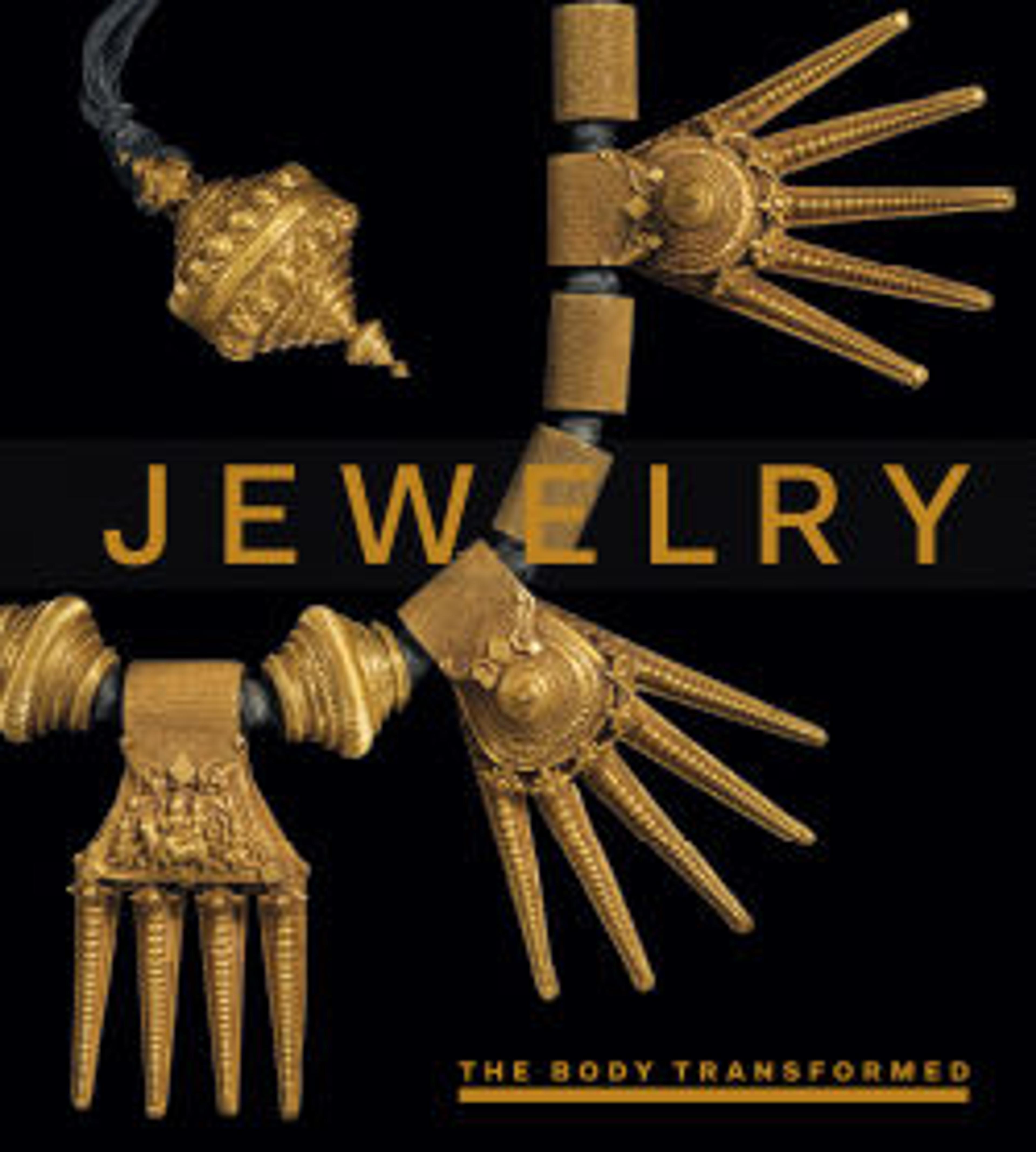Floral collar from Tutankhamun's Embalming Cache
This remarkably well preserved floral collar illustrates how the broad collars so frequently depicted in Egyptian tomb paintings were made. Alternating rows of flower petals and blossoms, leaves, berries, and blue faience beads were sewn to a papyrus backing, and linen ties secured the collar around the wearer's neck. Some of the flora used in the Tutankhamun collars have been identified as olive leaves, cornflowers, nightshade berries, and poppies. Several collars in the cache were bound around the edge with red cloth, and the resulting combination of red, blue, black, and green must have been very colorful and similar to the polychrome decoration on some of the pottery jars in the same deposit.
The collars were probably worn during a ceremony that took place when Tutankhamun was buried in the Valley of the Kings. After the ceremony, they were stuffed into a group of large pottery jars that were buried in a pit about fifty yards from the king's tomb. The jars also contained linen cloth, bags of natron (used in mummification), broken dishes (from the feast), and mud sealings with the name of the king. When the jars were discovered, almost twenty years before Tutankhamun's tomb was found, they were an important clue that the tomb was somewhere in the royal cemetery.
The collars were probably worn during a ceremony that took place when Tutankhamun was buried in the Valley of the Kings. After the ceremony, they were stuffed into a group of large pottery jars that were buried in a pit about fifty yards from the king's tomb. The jars also contained linen cloth, bags of natron (used in mummification), broken dishes (from the feast), and mud sealings with the name of the king. When the jars were discovered, almost twenty years before Tutankhamun's tomb was found, they were an important clue that the tomb was somewhere in the royal cemetery.
Artwork Details
- Title:Floral collar from Tutankhamun's Embalming Cache
- Period:New Kingdom
- Dynasty:Dynasty 18
- Reign:reign of Tutankhamun
- Date:ca. 1336–1327 B.C.
- Geography:From Egypt, Upper Egypt, Thebes, Valley of the Kings, Embalming cache of Tutankhamun (KV 54), Davis/Ayrton excavations, 1907
- Medium:Papyrus, olive leaves, persea leaves, nightshade berries, celery (?), faience, linen dyed red
- Dimensions:Diam. 47 cm (18 1/2 in.); Diam. of disk beads 0.5 cm (3/16 in.)
Box mount: W. 57 cm (22 7/16 in.); D. 57 cm (22 7/16 in.); H. 7 cm (2 3/4 in.) - Credit Line:Gift of Theodore M. Davis, 1909
- Object Number:09.184.216
- Curatorial Department: Egyptian Art
More Artwork
Research Resources
The Met provides unparalleled resources for research and welcomes an international community of students and scholars. The Met's Open Access API is where creators and researchers can connect to the The Met collection. Open Access data and public domain images are available for unrestricted commercial and noncommercial use without permission or fee.
To request images under copyright and other restrictions, please use this Image Request form.
Feedback
We continue to research and examine historical and cultural context for objects in The Met collection. If you have comments or questions about this object record, please contact us using the form below. The Museum looks forward to receiving your comments.
